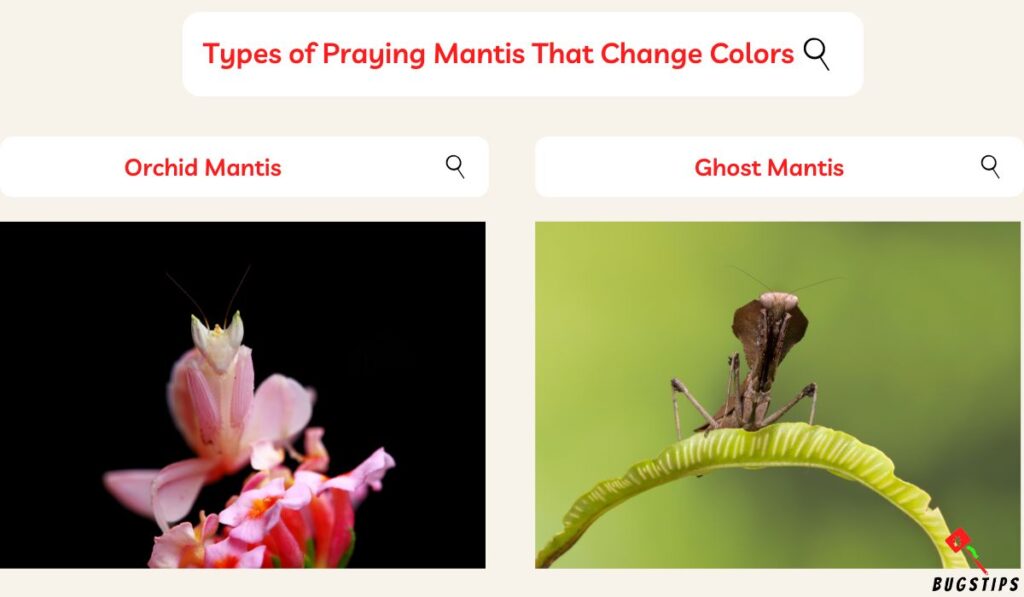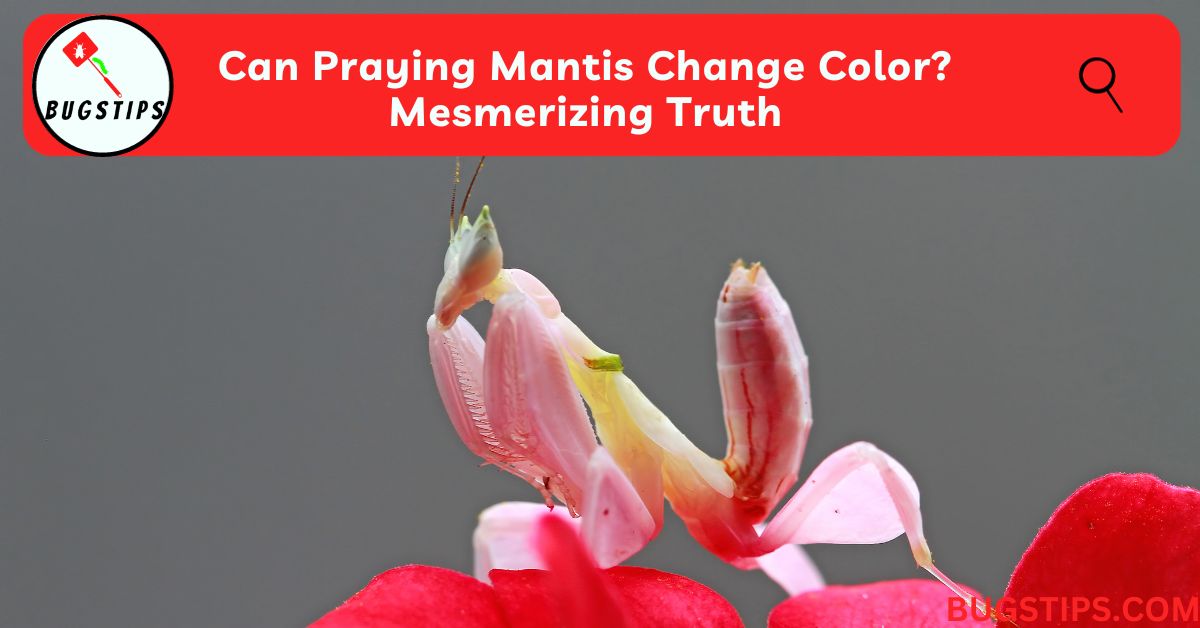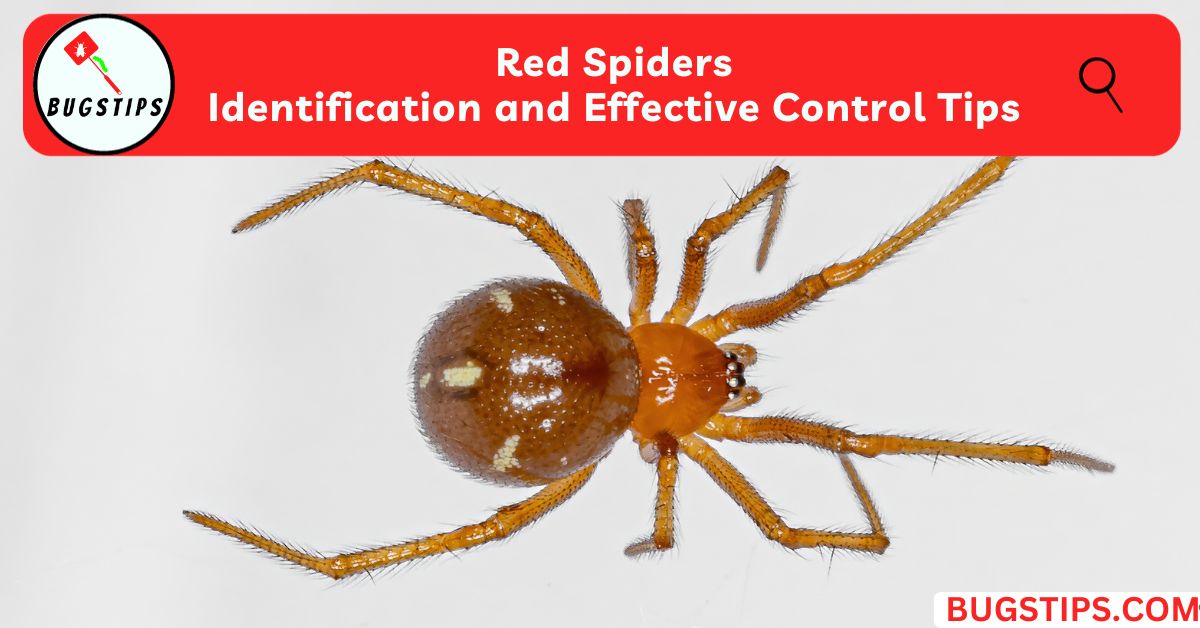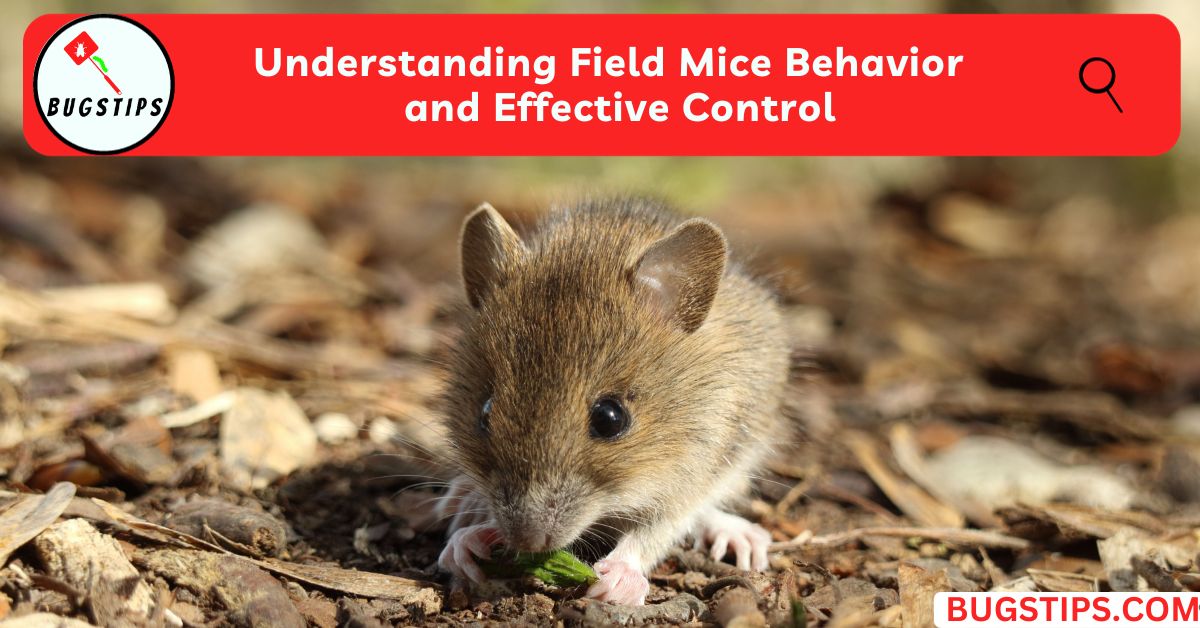This post may contain affiliate links which means as an Amazon Associate, this site may earn a small commission on qualified purchases made through links at no extra cost to you. Learn more on Affiliate Disclosure
Praying mantises are master hunters, known for their unique and deadly front legs that snatch unwary prey.
But did you know many mantis species are also masters of disguise? These insects have the incredible ability to change colors to blend into their surroundings.
In the insect world, color change serves an important purpose – camouflage.
By blending in with their environment, mantises can evade predators and sneak up on prey.
Some species only change shade, while others can transform through a whole rainbow of colors.
Certain types of mantises even mimic flowers or leaves, taking their disguises to the next level!
In this article, we’ll explore several of the most remarkable praying mantis species and their color-changing talents.
You’ll learn about ghost mantises that fade from bright green to pale white, and orchid mantises that resemble pink petals.
We’ll also cover what triggers these color changes, whether the females transform colors too, and some of the strangest color shifts like gray, brown, and even blue.
So read on to uncover the remarkable color-changing abilities of these incredible insects!
Can Praying Mantis Change Color?
Unlike chameleons, praying mantises cannot instantly change colors for quick camouflage.
However, some species are able to undergo more gradual color changes to blend into their surroundings.
During the molting process, a mantis sheds its old exoskeleton and emerges with a newer, larger one.
At this time, mantises may appear translucent or even white for a short period.
For certain species, the new exoskeleton can take on a different hue than the previous one, resulting in a color change.
However, this transformation happens slowly over days or weeks.
The color change ability varies by species.
Some mantises may cycle through green, brown, and tan shades as they molt to match the color of leaves at different seasons.
Others may permanently transform from green to brown or vice versa after a molt.
But in general, a mantis cannot instantly switch colors like a chameleon.
Instead, the mantis’s primary defense is its natural camouflage coloration.
Most species are well-suited to blend in with leaves, branches, or bark.
For example, a Carolina mantis perched motionless on a green leaf relies on its innate green color to avoid detection.
While molting may lead to subtle color tweaks, the mantis depends on its ordinary hues for disguising itself day-to-day.
So praying mantises can change color over time, especially when molting. But they don't have abilities for instant color transformations. Their best camouflage is their natural coloration matching their habitat.
Related Article – What Do Praying Mantis Eat?
Types of Praying Mantis That Change Colors
With over 2,400 species globally, praying mantises come in a kaleidoscope of colors and impressive camouflage strategies.
Some mantis species have developed the ability to gradually change hues to blend into their habitat.
Let’s look at some of the most spectacular color-changing mantis species.

Orchid Mantis (Hymenopus coronatus)
- The orchid mantis is aptly named for its ability to resemble a pink or white flower.
- Native to parts of Asia, this remarkable insect can change between white, pink, and brown.
- When resting on a pink orchid bloom, the mantis blends in seamlessly.
- During autumn, individuals turn brown to mimic dried leaves and twigs.
- The change happens gradually as the mantis molts.
- Females are especially adept at matching flower colors.
Ghost Mantis (Phyllocrania paradox)
- The ghost mantis is aptly named for its spectral appearance and ability to blend seamlessly into its habitat.
- This species is known for its diverse color palette, ranging from earthy tones to shades of green, and sometimes even pink or white.
- Ghost mantises possess a characteristic flattened, leaf-like body shape, assisting them in resembling foliage and ambushing unsuspecting prey.

European Mantis (Mantis religiosa)
- With a range spanning Europe, Asia, and North Africa, the European mantis adapts its color based on habitat.
- Individuals found in verdant forests and meadows will be bright green.
- But those residing in dry grasslands often exhibit tans, browns, and shades of gray.
- The European mantis can’t change instantly, but molting allows gradual color change to match the surroundings.
- This helps conceal them from predators when perched motionless on vegetation.
Carolina Mantis (Stagmomantis Carolina)
- The Carolina mantis is a master of subtle color change.
- Ranging across the United States, they blend in seamlessly with leaves thanks to shades of green, brown, and tan.
- Close observation shows their colors gradually shift between molts to match the vegetation.
- In spring, they sport vivid greens but take on tans and browns in fall.
- This provides year-round camouflage as the seasons change from live plants to dried foliage.

Spiny Flower Mantis (Pseudocreobotra wahlbergii)
- The spiny flower mantis is a petite and colorful species known for its resemblance to flowers, hence the name.
- Native to sub-Saharan Africa, this spectacular mantis can mimic flowers down to the finest detail.
- From pink and white to yellow and purple, it transforms to match its floral perches.
- While other species change gradually when molting, the spiny flower mantis can shift colors more rapidly, sometimes in just a few days.
- This allows it to bounce between different colorful blooms in its habitat.
Devil’s Flower Mantis (Idolomantis diabolical)
- The devil’s flower mantis is a visually striking species with an aptly dramatic name.
- They are known for their vivid coloration, which can range from shades of green to brown and even reddish-brown.
- With their fierce appearance and unique features, they capture the curiosity of insect enthusiasts and nature lovers.

Chinese Mantis (Tenodera sinensis)
- The Chinese mantis is one of the largest mantis species and this species is native to Asia but is now found worldwide.
- Chinese mantises are masters of camouflage with green and brown wings that resemble leaves.
- During molting, individuals may shift from green to brown or vice versa depending on the plant life in their habitat.
- The color change allows them to blend in year-round whether surrounded by verdant vegetation or dried leaves.
African Twig Mantis (Popa spurca)
- As its name suggests, this African native resembles a dried twig or bark.
- Its slender body already provides camouflage from predators when stationary in trees.
- But the African twig mantis can also shift from greens to tans and browns during molting.
- This helps them disappear against both living and dead vegetation as seasons change. Their cryptic coloring makes them a challenge to spot!
Related Article – Do Praying Mantis Eat Ants?
Does a Female Praying Mantis Change Color?
Yes, female praying mantises also have the ability to change colors just like males of the same species.
As discussed in the examples above, certain female mantises are especially adept at matching flower colors, like the orchid mantis.
The females blend in with blooms in shades of white, pink, and purple through gradual changes across molting.
Other species like the Carolina mantis showcase females that shift from green to tan and back again between seasons.
In general, the female’s color-changing capabilities parallel the male’s for a given mantis species.
Both sexes have adapted this trait to better camouflage themselves from predators and prey.
You May Also Like – Do Worms Feel Pain?
Do Praying Mantis Turn Brown When They Die?
It’s a common misconception that praying mantises always turn brown when they die.
While some species may exhibit a brownish color after death, this doesn’t happen across the board.
For example, the European mantis tends to become pale and washed out when it dies but doesn’t specifically turn brown.
The Carolina mantis keeps its last held color, whether green, tan, or otherwise.
However, certain mantis species found in drier, brown-hued environments do seem more prone to developing a brownish cast after death.
The underlying chemical and biological reasons are not fully understood.
One hypothesis is that drier conditions cause the mantis’s metabolism to slow down as it’s dying, and waste products like melanin build up in the exoskeleton, creating the brown color.
You May Also Like – 8 Bugs That Look Like Flying Termites
Is a Gray Praying Mantis Poisonous?
The color of a praying mantis does not determine whether or not it is poisonous.
Mantises come in a huge variety of hues, including green, tan, brown, pink, and gray.
But their color is primarily for camouflage rather than signaling toxicity.
All mantis species can bite when threatened, but they do not inject venom.
The only exception is the ground mantis, which has a mildly venomous bite that may cause temporary numbness or swelling in humans.
However, the ground mantis is tan or brown rather than gray.
So while the gray coloration helps certain mantis species like the Carolina mantis blend in with pale bark or dried foliage, it does not signify poison.
Their formidable forelegs are their main weapons for capturing prey rather than any kind of poison.
So gray praying mantises, like their green, brown, and multi-colored cousins, are not poisonous despite their exotic and varied coloring.
You May Also Like – 16 Green Bugs That Bite
Do Praying Mantis Change Color in the Fall?
Praying mantises can undergo seasonal color changes as autumn approaches.
For species like the Carolina mantis that inhabit temperate regions with four seasons, the shift from summer to fall brings about changes in vegetation.
As green summer foliage dries out and turns brown, mantises will molt to colors better suited for autumn camouflage.
Their exoskeletons take on hues of tan, brown, and gray that disappear against dried leaves and twigs.
This color change is gradual over multiple molts and varies by species – not all mantises will shift colors.
But for many, the autumnal transformation helps maintain their stealthy ambush strategy as the environment changes to browns and tans.
So in general, the fall season does prompt subtle color changes for some praying mantis species in temperate habitats.
You May Also Like – White Bugs on Plants
Final Thoughts
The ability to change color is a fascinating adaptation seen in certain praying mantis species.
While their color shifts are more gradual than a chameleon’s, mantises can transform through an incredible range of hues from vivid greens to ghostly whites.
This helps them disappear seamlessly into foliage, flowers, bark, and more as seasons change.
We still have much to uncover about the biological mechanisms behind their color transformations across molting cycles.
What we do know is that this ability provides mantises with a critical evolutionary edge to evade predators and capture prey.
Color change offers mantises of lifesaving camouflage and stealth.
So while the pace of change may be slower, praying mantises remain masters of disguise thanks to their remarkable color-changing capabilities.
Their adaptations continue to wow scientists and nature enthusiasts alike.
FAQs
Do praying mantis change color?
Some species can change colors gradually, especially when molting.
Why do praying mantis change colors?
Color change provides camouflage and helps mantises avoid predators and sneak up on prey undetected.
How do mantises change color?
Mantises change color slowly across molting cycles, shedding their old exoskeleton for a newer one with different pigmentation.
Can a praying mantis turn white?
Yes, ghost and orchid mantises can fade to white temporarily when molting or matching white flowers.
Why did my praying mantis eyes turn dark?
Dark eyes are a sign of dehydration in praying mantises. Proper hydration will restore their normal eye color.
Are praying mantis eyes red?
Their eyes appear dark red at night for better night vision and light green during the day for camouflage.
Resources – (for further reading)
Cleveland Museum of Natural History – Curator Uncovers Re-Evolution of Disruptive Camouflage
Houston Museum of Natural Science – Praying Mantises: Masters of Disguise | BEYONDbones
University of Maryland Extension – Praying Mantid (Mantis)




